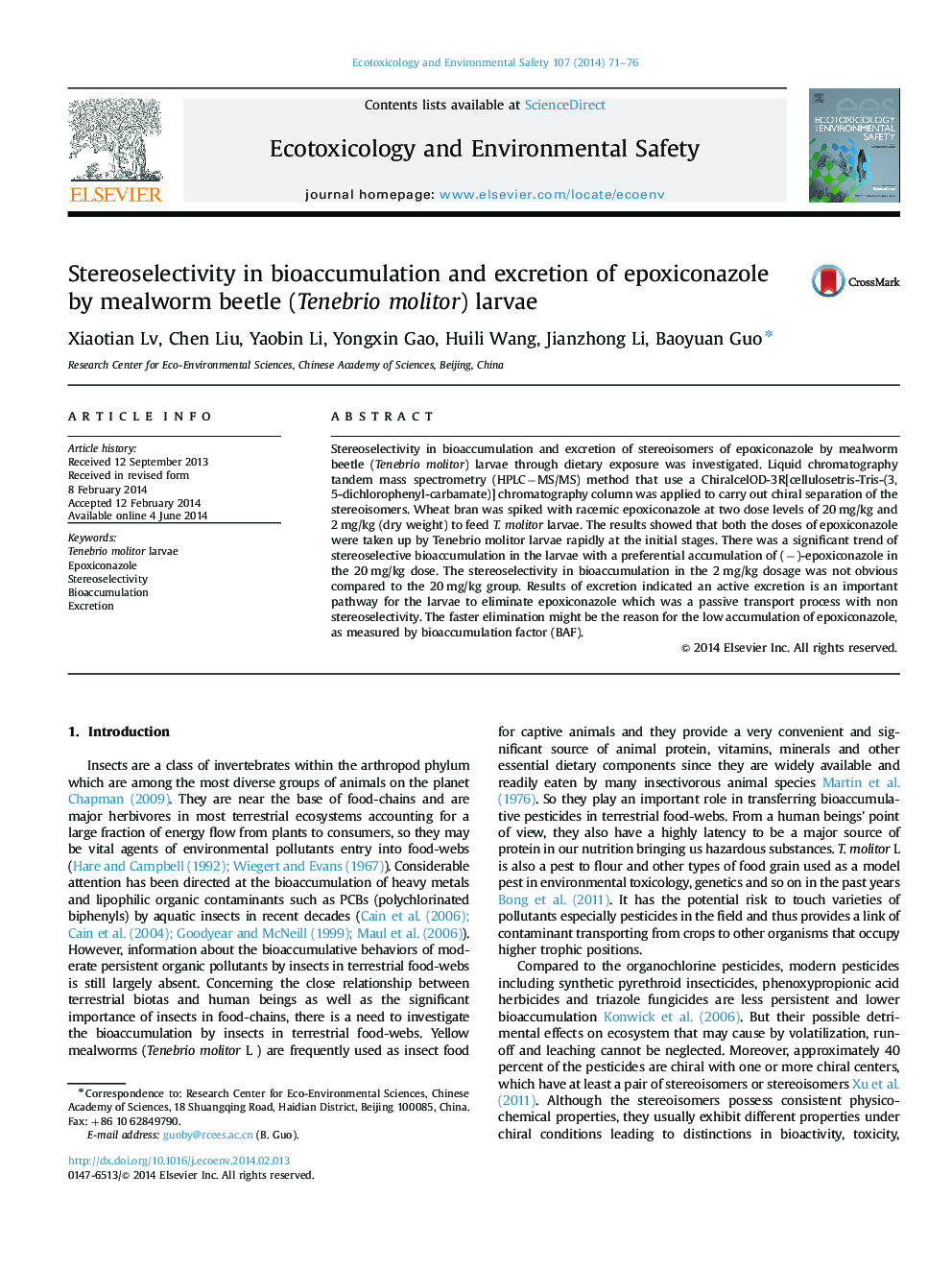| Article ID | Journal | Published Year | Pages | File Type |
|---|---|---|---|---|
| 4419959 | Ecotoxicology and Environmental Safety | 2014 | 6 Pages |
•Larvae were fed to investigate stereoselective bioaccumulation and excretion.•HPLC−MS/MS was applied to determine the stereoisomers of epoxiconazole.•A preferential accumulation of (–)-epoxiconazole in 20 mg/kg dosage exposure.•The stereoselective bioaccumulation in 2 mg/kg dosage exposure was not so obvious.•Excretion of epoxiconazole was a passive transport non-stereoselective process.
Stereoselectivity in bioaccumulation and excretion of stereoisomers of epoxiconazole by mealworm beetle (Tenebrio molitor) larvae through dietary exposure was investigated. Liquid chromatography tandem mass spectrometry (HPLC−MS/MS) method that use a ChiralcelOD-3R[cellulosetris-Tris-(3, 5-dichlorophenyl-carbamate)] chromatography column was applied to carry out chiral separation of the stereoisomers. Wheat bran was spiked with racemic epoxiconazole at two dose levels of 20 mg/kg and 2 mg/kg (dry weight) to feed T. molitor larvae. The results showed that both the doses of epoxiconazole were taken up by Tenebrio molitor larvae rapidly at the initial stages. There was a significant trend of stereoselective bioaccumulation in the larvae with a preferential accumulation of (−)-epoxiconazole in the 20 mg/kg dose. The stereoselectivity in bioaccumulation in the 2 mg/kg dosage was not obvious compared to the 20 mg/kg group. Results of excretion indicated an active excretion is an important pathway for the larvae to eliminate epoxiconazole which was a passive transport process with non stereoselectivity. The faster elimination might be the reason for the low accumulation of epoxiconazole, as measured by bioaccumulation factor (BAF).
